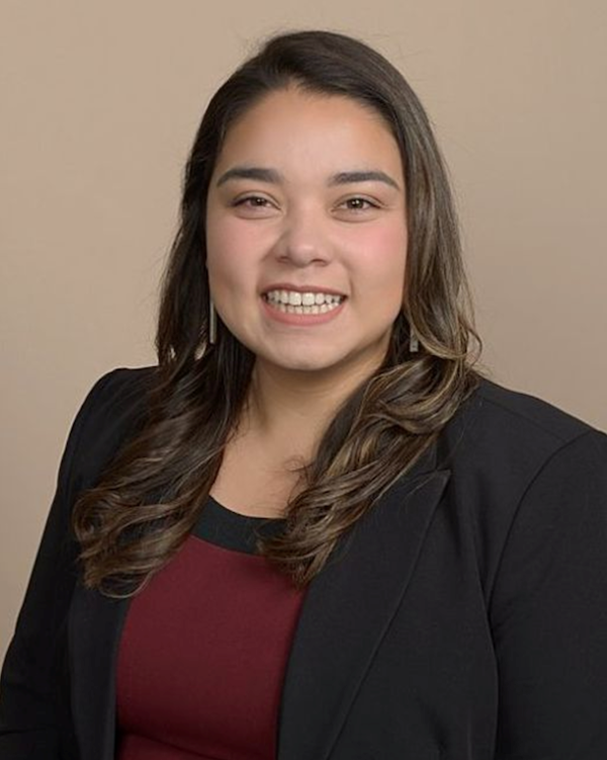How Do I Critically Consume Quantitative Research?
By Austin Boyd
Every measurement, evaluation, statistics, and assessment (MESA) professional, whether they are established educators and practitioners or aspiring students, engages with academic literature in some capacity. Sometimes for work, other times for pleasure, but always in the pursuit of new knowledge. But how do we as consumers of research determine whether the quantitative research we engage with is high quality?
 My name is Austin Boyd, and I am a researcher, instructor, and ESM alumni. I have read my fair share of articles over the past decade and was fortunate enough to publish a few of my own. I have read articles in the natural, formal, applied, and social sciences, and while they all shared the title of peer-reviewed publication, there was definitely variability in the quality of quantitative research from one article to the next. Initially, it was difficult for me to even consider the idea that a peer-reviewed publication would be anything less than perfect. However, as I have grown as a critical consumer of research, I have devised six questions to keep in mind when reading articles with quantitative analyses that allow me to remain objective in the face of exciting results.
My name is Austin Boyd, and I am a researcher, instructor, and ESM alumni. I have read my fair share of articles over the past decade and was fortunate enough to publish a few of my own. I have read articles in the natural, formal, applied, and social sciences, and while they all shared the title of peer-reviewed publication, there was definitely variability in the quality of quantitative research from one article to the next. Initially, it was difficult for me to even consider the idea that a peer-reviewed publication would be anything less than perfect. However, as I have grown as a critical consumer of research, I have devised six questions to keep in mind when reading articles with quantitative analyses that allow me to remain objective in the face of exciting results.
- What is the purpose of the article?
The first question to keep in mind when reading an article is, “What is its purpose?” Articles may state these in the form of research questions or even in the title by using words such as “empirical”, “validation”, and “meta-analysis”. While the purpose of an article has no bearing on its quality, it does impact the type of information a reader should expect to obtain from it. Do the research questions indicate that the article will be presenting new exploratory research on a new phenomenon or attempting to validate previous research findings? Remaining aware of the article’s purpose allows you to determine if the information is relevant and in the scope of what it should be providing.
- What information is provided about obtaining participants and about the participants themselves?
The backbone of quantitative research is data. In order to have any data, participants or cases must be found and measured for the phenomena of interest. These participants are all unique, and it is this uniqueness that needs to be disclosed to the reader. Information on the population of interest, how the selected participants were recruited, who they are, and why their results were or were not included in the analysis is essential for understanding the context of the research. Beyond the article itself, the demographics of the participants are also important for planning future research. While research participants are largely Western, educated, industrialized, rich, and democratic societies (WEIRD; Henrich et al., 2010), it should not be assumed that this is the case for all research. The author(s) of an article should disclose demographic information of the participants, so the readers understand the context of the data and the generalizability of the results, and so that researchers can accurately replicate or expand the research to new contexts.
- Do the analyses used make sense for the data and proposed research question(s)?
In order to obtain results from the quantitative data collected, some form of analysis must be conducted. The most basic methods of exploring quantitative data are called statistics (Sheard, 2018). The selected statistical analysis should align with the variables presented in the article and answer the research question(s) guiding the project. There is a level of subjectivity as to which statistical analysis should be used to analyze data. Variables measured on a nominal scale should not be used as the outcome variable when conducting analyses that look at the differences between group means, such as t-tests and ANOVAs, while ratio scale variables should not be used to conduct analyses dealing with frequency distributions, such as chi-square tests. However, there are analyses which require the same variable types, making them seemingly interchangeable. For example, t-tests, logistic regressions, and point biserial analyses all use two variables, one continuous and one binary. However, each of these analyses addresses different research questions such as “Is there a difference between groups?”, “Can we predict an outcome?”, and “Is there a relationship between variables?”. While there is a level of subjectivity as to which statistical analysis can be used to analyze data, there are objectively incorrect analyses based on both the overarching research questions and the scale of measurement of the available variables in the data.
- What results are provided?
While a seemingly straightforward question, there is a lot of information that can be provided about a given analysis. The most basic, and least informative, is a blanket statement about the statistical significance. Even if there is no statistically significant result to report, a blanket statement is not sufficient information about the analyses with all the different values that can be reported for each analysis. For example, a t-test has a t value, degrees of freedom, p value, confidence interval, power level, and effect size, all of which provide valuable information about the results. While having some of these values does allow the reader to calculate the missing ones, the onus should not be put on the reader to do so (Cohen, 1990). Additionally, depending on the type of statistical analysis chosen, additional tests of the data must be conducted to determine if the data meets the assumptions necessary for the analysis. The results of these tests of assumptions and the decisions made based on them should be reported and supported by the existing literature.
- Is there any discussion of limitations?
Almost every article has limitations in some form or other, which should be made known to the reader. If an article didn’t have any limitations, the author would make a point to state as much. Limitations include limits to the generalizability of the findings, confounding variables, or simply time constraints. While these might seem negative, they are not immediate reasons to discredit an article entirely. As was the case for the demographics, the limitations provide further context about the research. They can even be useful in providing direction for follow-up studies in the same way a future research section would.
- Do you find yourself still having questions after finishing the article?
The final question to keep in mind once you have finished reading an article is “Do you still have questions?” At the end of an article, you shouldn’t find yourself needing more information about the study. You might want to know more about the topic or similar research, but you shouldn’t be left wondering about pieces of the research design or other methodological aspects of the study. High-quality research deserves an equally high-quality article, which includes ample information about every aspect of the study.
While not an exhaustive list, these six questions are designed to provide a starting point for determining if research with quantitative data is of high quality. Not all research is peer-reviewed, including conference presentations, blog posts, and white papers, and simply being peer-reviewed does not make a publication infallible. It is important to understand how to critically consume research in order to successfully navigate the ever-expanding body of scientific research.
Additional Resources:
https://www.linkedin.com/pulse/critical-consumers-scientific-literature-researchers-patients-savitz/
References:
Cohen, J. (1990). Things I have learned (So Far). The American Psychologist, 45(12), 1304–1312. DOI: 10.1037/0003-066X.45.12.1304
Henrich, J., Heine, S., & Norenzayan, A. (2010). The weirdest people in the world? Behavioral and Brain Sciences, 33 (2-3), 61-83 DOI: 10.1017/S0140525X0999152X
Sheard, J. (2018). Chapter 18 – Quantitative data analysis. In K. Williamson & G. Johanson (Eds.), Research Methods (2nd ed., pp. 429-452). Chandos Publishing. DOI: 10.1016/B978-0-08-102220-7.00018-2


 Hello! My name is Nicole Jones, and I am a 2022 graduate of the Evaluation, Statistics, and Methodology (ESM) PhD program at the University of Tennessee, Knoxville (UTK). I currently work as the Assessment & Accreditation Coordinator in the College of Veterinary Medicine (CVM) at the University of Georgia (UGA). I also teach online, asynchronous program evaluation classes for UTK’s Evaluation, Statistics, & Methodology PhD and Evaluation Methodology MS programs. My research interests include the use of artificial intelligence in evaluation and assessment, competency-based assessment, and outcomes assessment.
Hello! My name is Nicole Jones, and I am a 2022 graduate of the Evaluation, Statistics, and Methodology (ESM) PhD program at the University of Tennessee, Knoxville (UTK). I currently work as the Assessment & Accreditation Coordinator in the College of Veterinary Medicine (CVM) at the University of Georgia (UGA). I also teach online, asynchronous program evaluation classes for UTK’s Evaluation, Statistics, & Methodology PhD and Evaluation Methodology MS programs. My research interests include the use of artificial intelligence in evaluation and assessment, competency-based assessment, and outcomes assessment.
 Hi! My name is Jennifer Ann Morrow and I’m an Associate Professor in Evaluation Statistics and Methodology at the University of Tennessee-Knoxville. I have been training emerging assessment and evaluation professionals for the past 22 years. My main research areas are training emerging assessment and evaluation professionals, higher education assessment and evaluation, and college student development. My favorite classes to teach are survey research, educational assessment, program evaluation, and statistics.
Hi! My name is Jennifer Ann Morrow and I’m an Associate Professor in Evaluation Statistics and Methodology at the University of Tennessee-Knoxville. I have been training emerging assessment and evaluation professionals for the past 22 years. My main research areas are training emerging assessment and evaluation professionals, higher education assessment and evaluation, and college student development. My favorite classes to teach are survey research, educational assessment, program evaluation, and statistics.  Dr. Brian
Dr. Brian 



 Hi everyone! My name is Dr. Jennifer Ann Morrow, and I’m the program coordinator for the University of Tennessee at Knoxville’s new distance education master’s program in Evaluation Methodology. I’m happy to announce that we are currently taking applications for our first cohort that will start in Fall 2024. In a world driven by data, the EM Master’s program gives you the skills to make evidence-based
Hi everyone! My name is Dr. Jennifer Ann Morrow, and I’m the program coordinator for the University of Tennessee at Knoxville’s new distance education master’s program in Evaluation Methodology. I’m happy to announce that we are currently taking applications for our first cohort that will start in Fall 2024. In a world driven by data, the EM Master’s program gives you the skills to make evidence-based 



